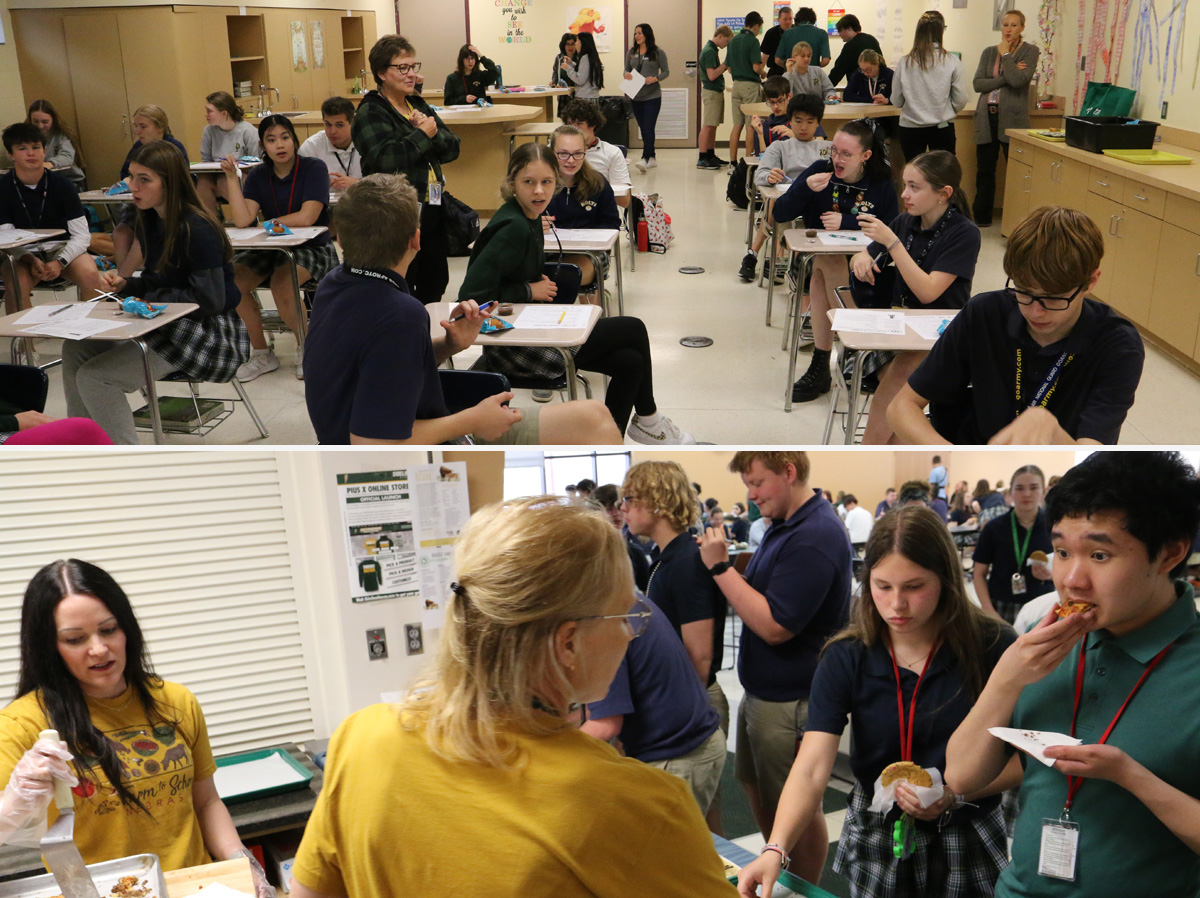
The Local and Indigenous Foods Training (LIFT) program educated food service staff, students and farmers on the benefits of using local foods in school meal programs. Implemented in the 2022–23 school year, 16 schools across Nebraska participated.
PROGRAM PROMOTED NEBRASKA FOODS IN SCHOOLS
The LIFT program highlighted recipes using Nebraska food items such as apples, aronia berries, beef, bison, rhubarb, turnips, as well as the following identified indigenous foods: corn, dry beans, winter squash, summer squash and native herbs.
Funded by a grant from Team Nutrition, LIFT was part of the Nebraska Farm To School program which is a collaboration between the Nebraska Department of Education and Nebraska Extension, in partnership with the U.S. Department of Agriculture.
A unique feature of LIFT is that it engaged students in creating and testing recipes, while developing and marketing recipes and local foods for use in the school meal programs. The program also provided school food service staff with resources to connect with local farmers to bring more local foods into the cafeteria.
Each school sampled, evaluated, marketed and menued two recipes created for the program. Students experienced the recipes through two formats:
• Small group activity in a classroom — called Chef’s Table — where students sampled the recipe and learned facts about the food, including historical, nutritional and agricultural aspects, and then explored in-depth sensory and marketing considerations.
• Cafeteria taste test for the entire school.
PIUS X ONLY URBAN SCHOOL TO PARTICIPATE
Pius X was the only urban school which participated in LIFT. The project involved school nutrition services, teachers, staff, students and administration. Alyssa Havlovic, Extension Educator in Lancaster County, served as a coach and helped implement activities. The school was selected to test recipes using local black beans and bison.
PIUS X’S FALL RECIPE FEATURED BLACK BEANS
Last fall, Havlovic led Pius X’s first Chef’s Table activity with students in AP Biology and AP Agriculture classes. They tasted Brownie Batter Hummus (see recipe in this e-newsletter) made with local black beans. Students were willing to try the recipe and gave excellent feedback on the texture, flavor and suggestions for what to serve with the brownie batter hummus.
Two members of the foodservice staff attended the Chef’s Table and then implemented the students’ suggested changes for the cafeteria taste test. Students created marketing materials to promote the cafeteria taste test and to encourage their peers to participate.
During the cafeteria taste test, students were surprised to learn that the recipe was made with black beans but couldn’t detect the “bean texture” they were expecting. Of the 247 students who sampled the brownie batter hummus, 91% of students reported they either “liked it” (48%) or “loved it” (43%).
PIUS X’S SPRING RECIPE FEATURED BISON
In the spring, students in the same classes at Pius X tested the Bison Pizza Topping (see recipe in this e-newsletter) for the second Chef’s Table activity led by Havlovic. Many students tried bison for the first time. During this activity, students learned about the history of bison in Nebraska, its nutritional benefits, sampled the recipe and then created marketing materials encouraging peers to participate in the second cafeteria taste testing. They even gave the recipe a new name — “Pizza of the Plains” — to highlight the history of the importance of the bison to the indigenous people of the North American plains.
During the classroom taste test, many students requested an additional sample, and the same thing happened in the cafeteria. The cafeteria taste test results revealed that of the 239 students who sampled the recipe, nearly 98% of students “loved it” (80%) or “liked it” (18%). When the bison pizza was offered as an entree on the cafeteria lunch menu, the foodservice staff served 976 servings of bison pizza! It is safe to say this recipe was a success and will appear on the menu again at Pius X High School.
BENEFITS OF THE PROGRAM
Each LIFT school received a grant reward for their participation in the project. Pius X elected to spend a portion of their funds on a new digital board for their cafeteria to display the menu for the day, along with information on what local foods are being served and about the local farmers providing these foods as a way to promote the foods and educate students.
The LIFT recipes tested across the state that reached an 85% acceptability rate will be sent to the USDA to post to the Child Nutrition Recipe Box (CNRB). The CNRB provides Child Nutrition Program operators with recipes to prepare healthy and delicious meals that are standardized to meet meal pattern requirements and provide meal pattern crediting information. Pius X will be recognized on the database for their role in testing both the Brownie Batter Hummus and Bison Pizza Topping, which both exceeded the 85% acceptability rate.
Carmen Goeden, Director of Nutrition Services at Pius X, said, “Introducing and incorporating Nebraska indigenous foods in our classrooms and cafeteria at Pius X High School ignited a whole new learning experience for students, teachers and kitchen staff. This program gave the opportunity to learn how to prepare new foods, meet new producers and gave the students a voice to express their preferences with the kitchen staff and market new foods to their peers. We are excited to continue to add and introduce more local food and producers to the Pius X community.”
FOR MORE INFORMATION
Learn more about the Local Indigenous Foods Training (LIFT) program and other Farm to School programs at https://education.ne.gov/ns/farm-to-school/local-and-indigenous-foods-training.